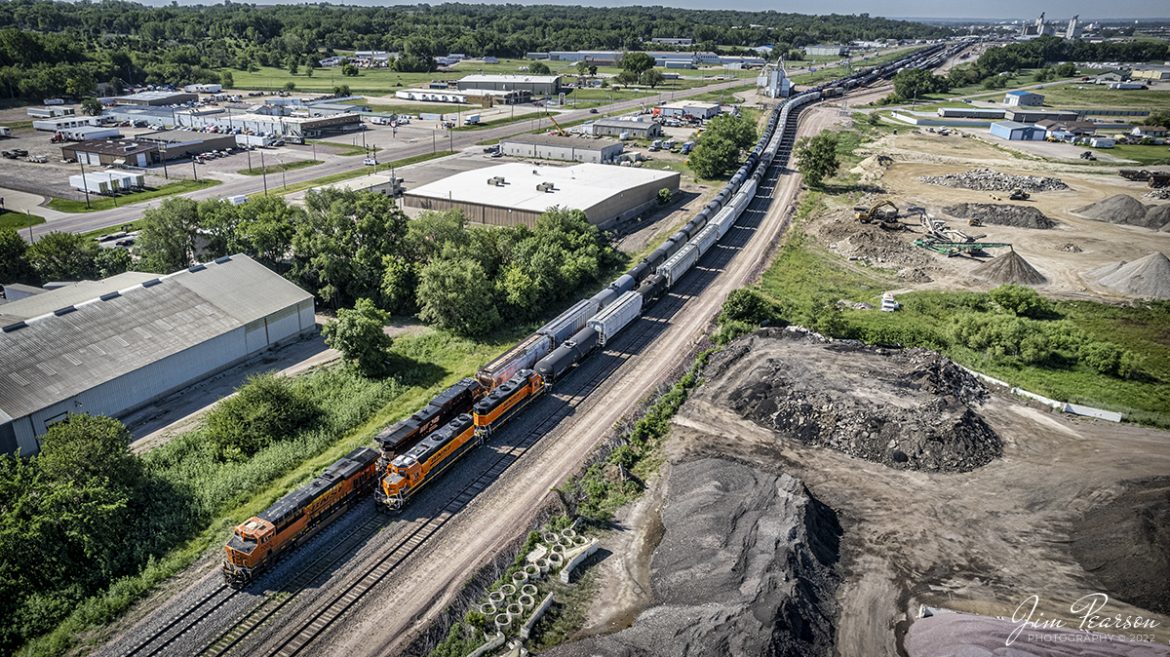BNSF 2557 and 2604 work the BNSF yard on the BNSF Marshall Subdivision at Sioux City, Iowa on the morning of June 3rd, 2022, a line of shadows leads back to the city in the distance.
According to the Sioux City History Website: When Sioux City first began to grow, most people arrived by either steamboat or stagecoach. In the eastern United States, railroads were being built to connect all major cities. The first railroad to develop in Iowa was in 1865, along the Mississippi. However, plans were soon developed to expand the system to all major Iowa cities.
Sioux City developers knew that if the town wanted to become a major city, it would need to be one of the first to have railroad access. Not only did railroads move people, but they also moved materials and manufactured goods.
In the fall of 1866, a large crowd of local businessmen, bankers, and speculators met with a gentleman named W.W. Walker. He was a representative of John Blair, a wealthy eastern railroad developer. Mr. Blair was planning on building the Sioux City and Pacific Railroad. This railroad would connect the city with the main line which ran through Missouri Valley. This would give the city connections all the way to Chicago and back east. All the city and county had to do was provide free land for the tracks and for the depot. The county agreed to donate the land in February of 1867. The deal was struck.
Tech Info: DJI Mavic Air 2S Drone, RAW, 22mm, f/2.8, 1/1500, ISO 120.

